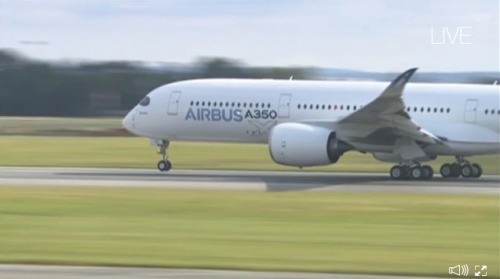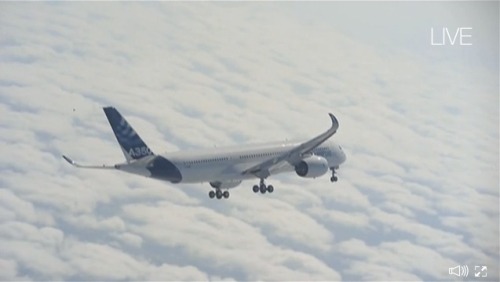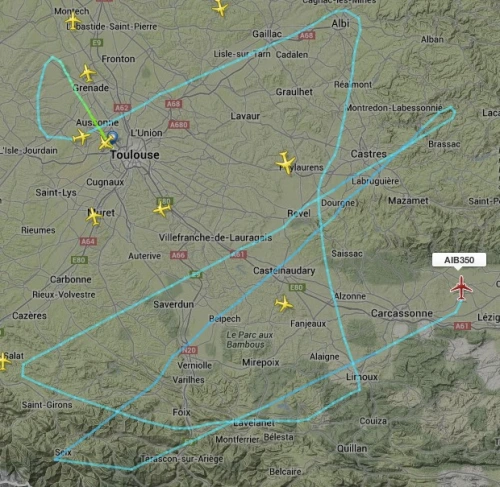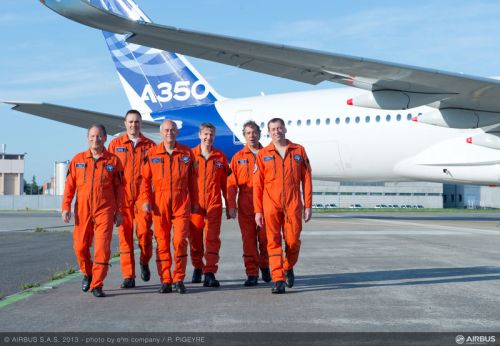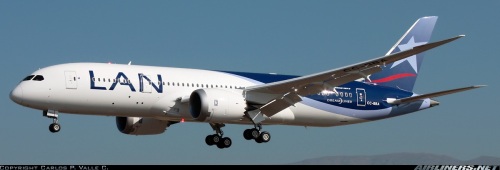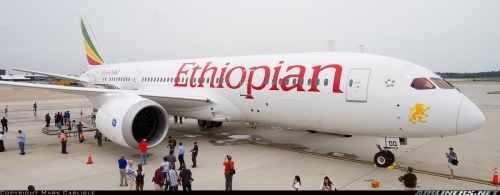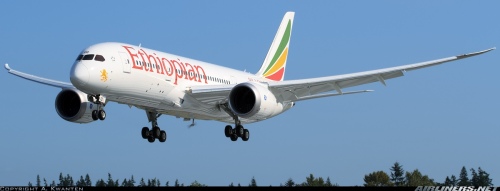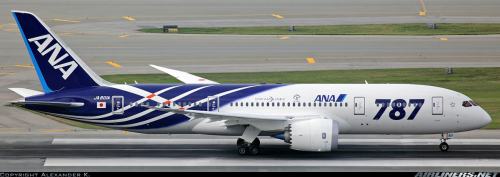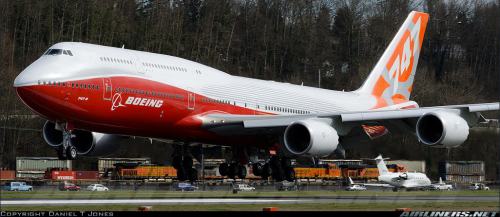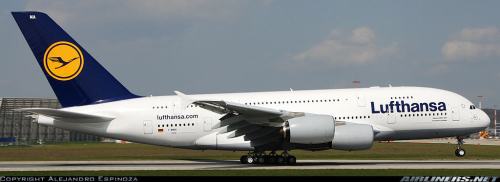The brand new Airbus A350 aircraft has taken to the skies for the first time ever on June 14, 2013 (earlier today). A very much awaited moment for the aviation world – and the 33 customers who have firm orders for the type – has happened, and the plane worked flawlessly. The first flying fuselage is an A350-900 version (the medium size of the type).
The Extra Wide Body (XWB) plane took off (see video) from Tolouse-Blagnac airport at 10:00 am local time. The first flight is a very important milestone in the life of a new aircraft type, that has been preceded by the manufacturing of different parts, transporting them to Toulouse, building the actual airplane, installing the wires, connecting the engines, running ground tests, engine power up (happened on June 2nd) and also taxi tests, when the plane rolled-up and down the runway by its own power. The fuel efficient Rolls-Royce Trent XWB engines on MSN1 are also new, and this flight marks the first flight of those engines as well. The A350 is planned to be more fuel efficient and have operation costs up to 8% lower than the Boeing 787 Dreamliner.
Nearly two hours into the flight, above the Northern part of the Pyrenees Mountains Peter Chandler has confirmed over radio in the Airbus.com live coverage that “All is going pretty well, the weather is beautiful up here and the plane behaves wonderful. We are climbing up higher to do some higher speed tests“. The first flight took nearly 4 hours altogether and ended with a smooth landing (see video).
The flight path on flightradar24.com
The A350 XWB is the all-new mid-size long range product line comprising three versions and seating between 270 and 350 passengers in typical three-class layouts. The new family will bring a step change in efficiency compared with existing aircraft in this size category, using 25 per cent less fuel and providing an equivalent reduction in CO2 emissions. Scheduled for entry-into-service in second half of 2014, the A350 XWB has already won 613 firm orders from 33 customers worldwide as mentioned above.
The A350 is the first Airbus with both fuselage and wing structures made primarily of carbon fibre-reinfoced polymer. The launch customer is Qatar Airways (who is soon to take its first Airbus A380 as well) with 80 pieces of the plane on firm order.
Besides this first test aircraft, two more of the type are soon to join the test fleet as they are already on the final assembly line. The third fuselage will be the first one to feature a full internal cabin as well, the other two are equipped with in-flight test lab computers on most of their deck and water tanks for heavy flight tests.
